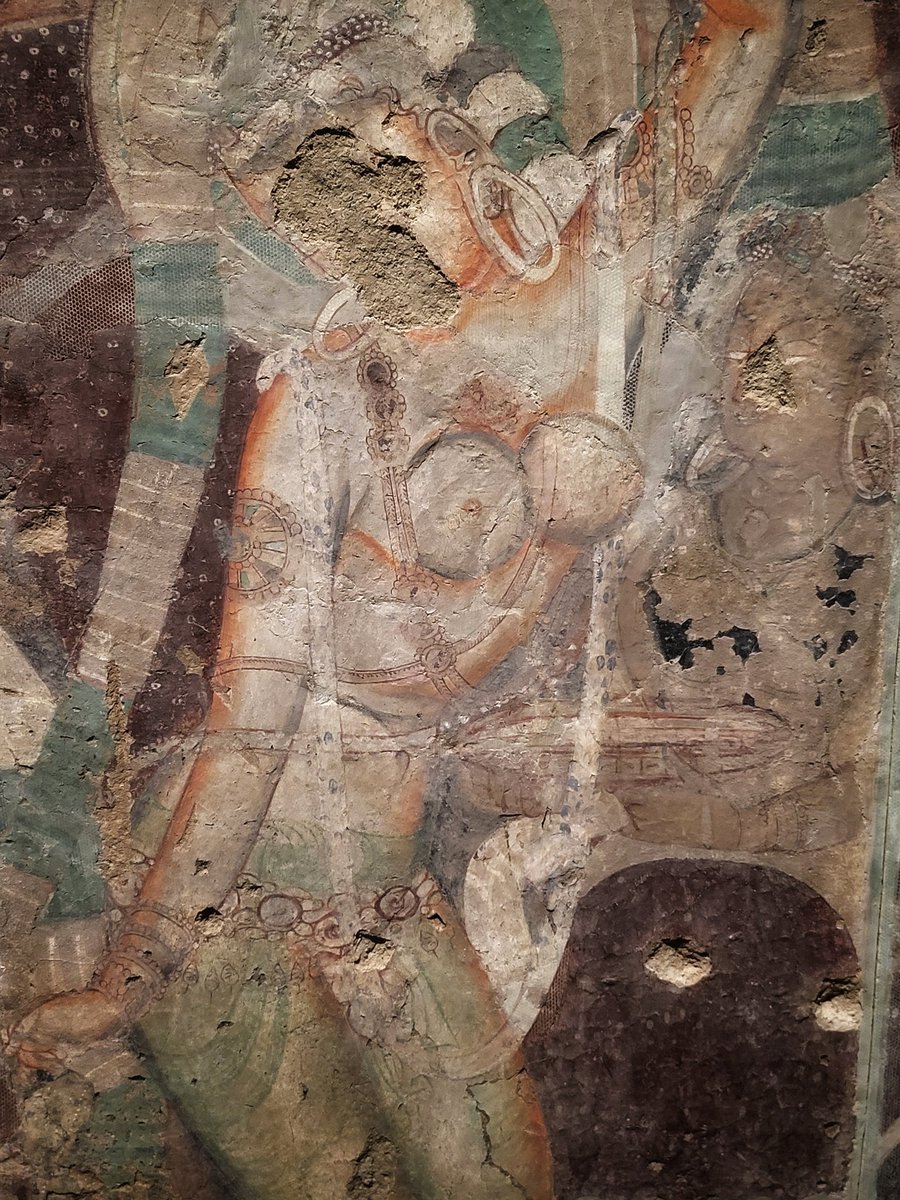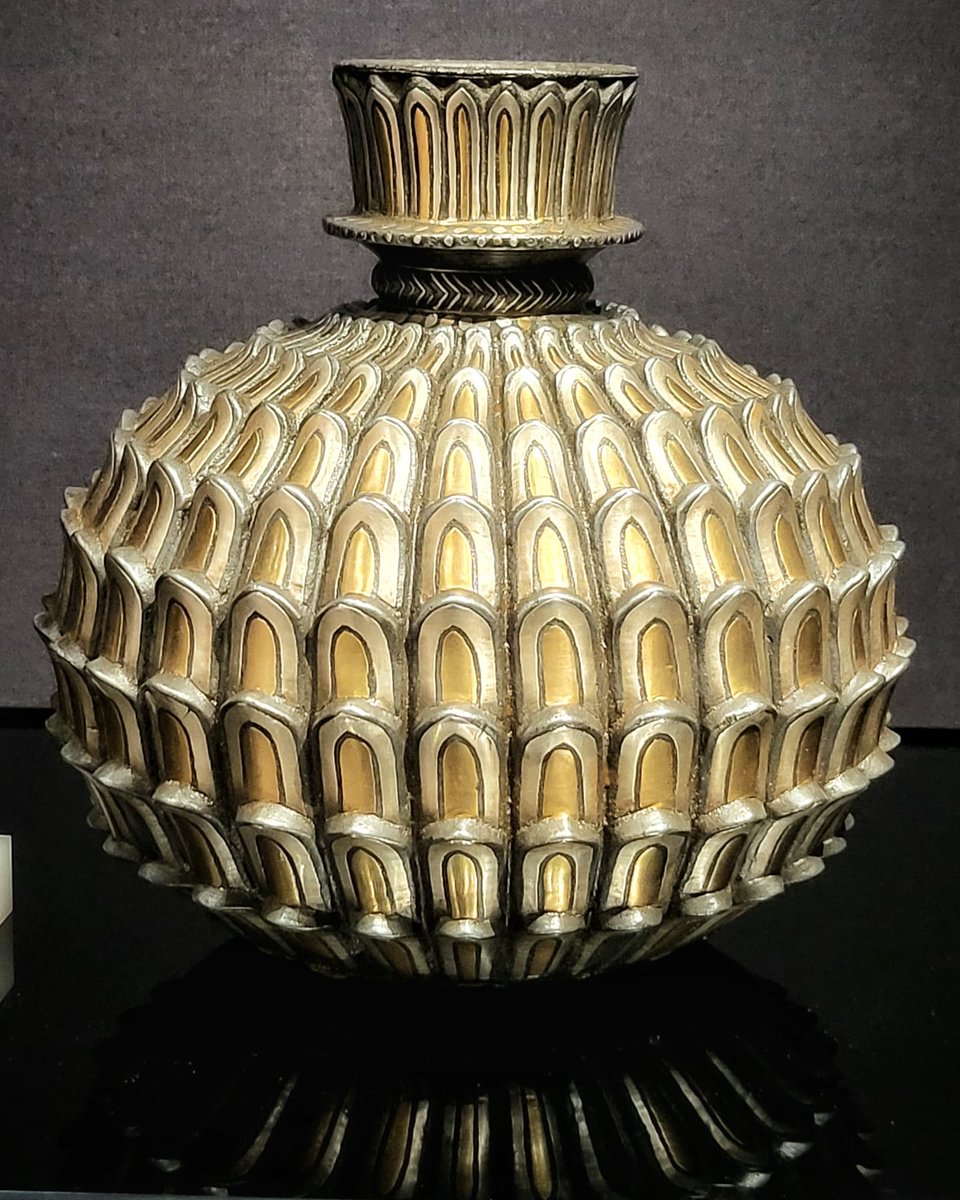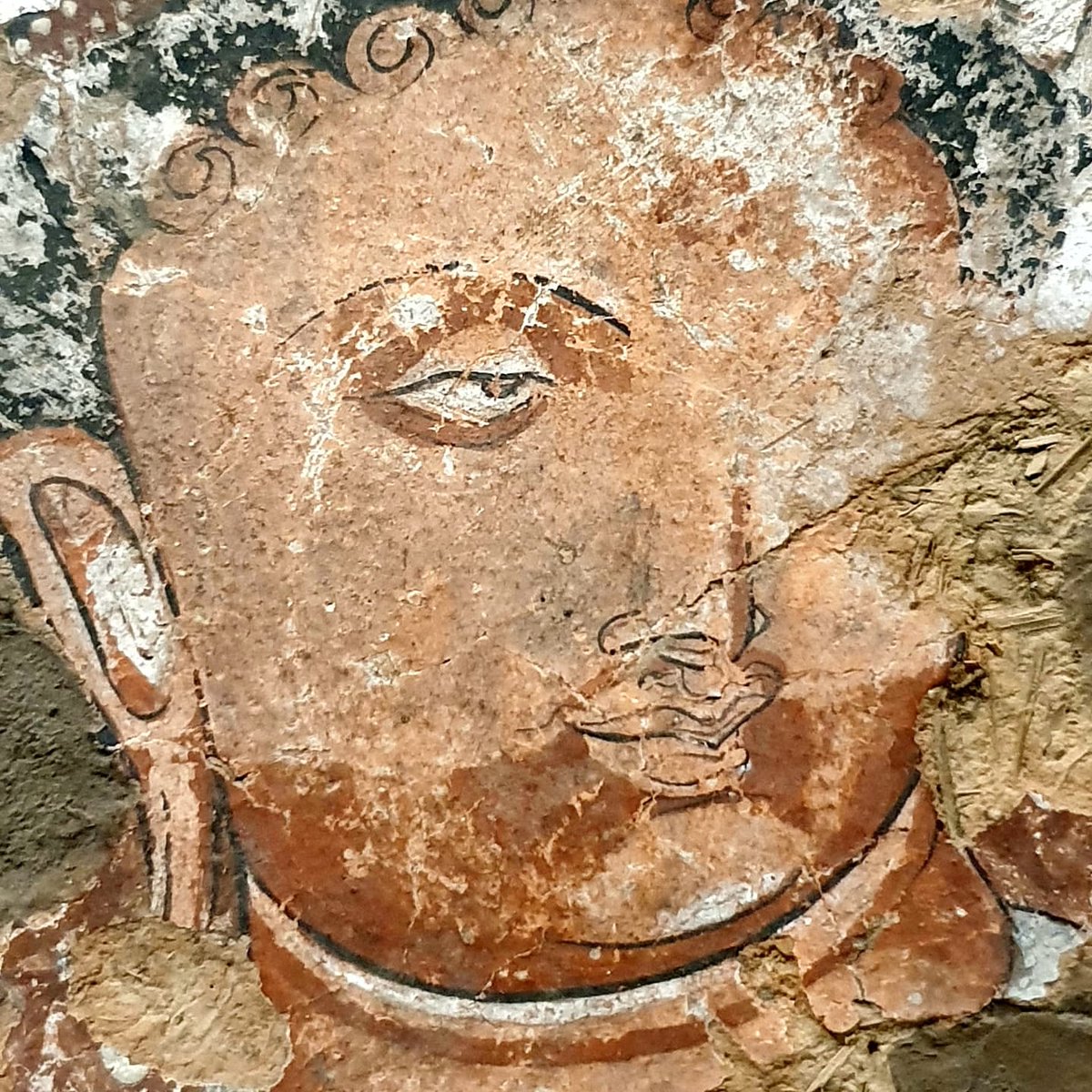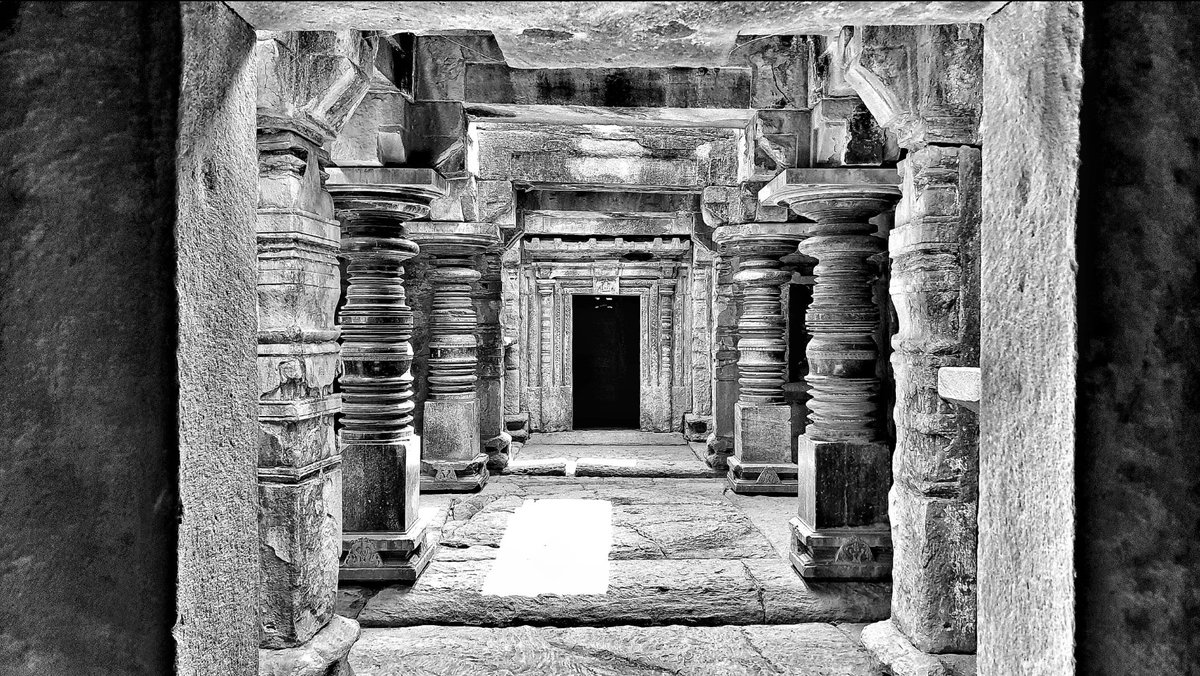
Itinerant Indian artists in Central Asia?
For the new Humboldt Forum galleries, @LillaBRS, Lilla Russell-Smith, has dug out of storage a whole range of 5th-10thC murals from Bezeklik and Kizil near Turfan in Xinjiang. Many have not been on display for decades.
For the new Humboldt Forum galleries, @LillaBRS, Lilla Russell-Smith, has dug out of storage a whole range of 5th-10thC murals from Bezeklik and Kizil near Turfan in Xinjiang. Many have not been on display for decades.

These murals from Xinjiang are so similar in tone to the murals at Ajanta and Bagh they may well be the work of itinerant Indian artists at work in Central Asia. 

These apsaras and gandhavras remind me of the similar heavenly begins hovering over Arjuna's penance at Mahabalipuram 

The love story of King Udayana, who plays his veena, and his wife Vasavadatta, who dances to his music, when he sees a premonition of her death. 







These murals were stripped from the walls of Xinjiang by the German Orientalist Albert von Coq, something that today would be considered the worst sort of colonial vandalism and looting. 







But with the Chinese now destroying so much of the Uighur heritage of Xinjiang, the remarkable new installation of Central Asian art at the Berlin Humboldt Forum is a safe and brilliantly curated home for these forgotten masterpieces of expatriate Indic art. 

• • •
Missing some Tweet in this thread? You can try to
force a refresh





















